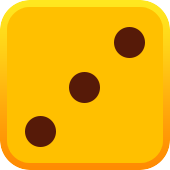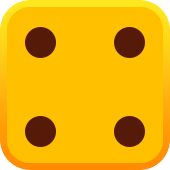












Players often ask how many types of poker really matter in practice. Think in types poker core families: community, stud, and draw, plus casino hybrids. This guide shows exact rules, betting structures, and where each shines, so you can pick fast and play confidently. We’ll compare procedures, table sizes, and odds levers, then map the types of poker you’ll meet live and online.
Community card poker family shares board cards while each seat holds private hole cards; fast betting and public information drive edge. Cash tables usually run blinds and four streets of action, and televised events make these the most visited types of poker games worldwide. Position and pot odds matter more than memorized charts because your reads update as the board develops. Typical ranges adapt to stack depth and rake conditions.
Each player gets two hole cards; five board cards appear across flop, turn, and river with four betting rounds. No-Limit dominates tournaments and is the most streamed types of poker game, while Pot-Limit and Fixed-Limit tighten variance and emphasize math. Preflop value comes from big pairs and strong Broadway; postflop, sizing and texture decide lines. Beginners learn quickly because hand reading follows clear stages.
|
Format |
Bet structure |
Common stakes |
Typical focus |
|
No-Limit |
Bet any amount up to stack |
$1/$2–$5/$10; MTTs |
Pressure, stack leverage |
|
Pot-Limit |
Bet ≤ current pot |
Mixed rotations |
Pot control, equity denial |
|
Fixed-Limit |
Set sizes by street |
$3/$6, $4/$8 |
Odds discipline, thin value |
You receive four hole cards but must use exactly two with three from the board, a detail that changes poker types of cards selection and amplifies draw equity. Pot-Limit Omaha builds bigger multiway pots; nut draws and backup equity are the north star. Weak two-pair and low flushes underperform in large pots where the nuts appear often. Sit at deeper tables to realize equity and punish dominated holdings.
|
Feature |
Hold’em |
Omaha |
|
Hole cards |
2 |
4 |
|
Must use from hand |
0–2 |
Exactly 2 |
|
Typical betting |
NL/FL |
Mostly PL |
|
Hand values |
Top pair viable |
Nuts dominate |
Stud uses antes and a bring-in, with mixed face-up/face-down cards dealt over several streets. Because no board is shared, memory and card removal matter; these are classic stud formats where reading live upcards is mandatory. Fixed-Limit pacing curbs volatility and rewards discipline on fourth and fifth street. Common options are Seven-Card Stud (high) and Razz (A-to-5 low).
You start with two downcards and one upcard, then receive three more upcards and a final downcard. Highest five-card hand wins, with usual rankings in effect. Raise when your board improves visibly or steals threaten, and slow down when opponents show paired or coordinated upcards. Bank most profit by defending live, high-equity starts and exiting dead types of poker draws early.
Razz is seven-card lowball where aces are low and straights/flushes don’t hurt; the wheel (A-2-3-4-5) is best. Open more with an ace up, especially if paint cards trail you. Attack when rivals catch high cards on fourth/fifth; protect when you pair or catch rough. Rhythm: small bets early, bigger bets late only with board advantage.
Here, everyone holds a private five-card hand and discards/redraws, making the purest of draw games. Betting happens before and after draws; tells come from draw counts and who stands pat. Limits are common; no-limit exists mostly in casual play. If you’re comparing different types of poker, draw highlights table image and frequency reading.
Each seat gets five, then one drawing round, then final betting and showdown. Position drives bluff rate; a pat raise screams nutted while a two-card draw often caps medium strength. Tighten early; widen late with blockers and high kickers. Protect value by sizing for calls versus habitual drawers.
In 2-7 Triple Draw, three drawing rounds aim for the lowest hand where straights/flushes count and aces are high; 7-5-4-3-2 rainbow is nuts. Four betting rounds (pre-draw, after each draw) reward pressure in position. “Snowing” (standing pat as a bluff) works versus tight blinds. Prefer smooth lows (9-7-5-4-2) to rough (9-8-7-5-2).
Casino hybrids pit you against the dealer using poker rankings, marketed as poker types of games and organized by variants by rules like qualifying hands and side bets. Payout tables and procedures set volatility and pace. Learn house ways before wagering, especially push/qualify rules that affect returns. Low-stress rhythm makes these ideal for groups.
|
Game |
Cards To Player |
Dealer Qualifies |
Core Bets |
Pace |
|
Three Card Poker |
3 |
Often Q-high |
Ante/Play, Pair Plus |
Fast |
|
Caribbean Stud |
5 |
Often AK-high |
Ante/Call, Jackpot |
Moderate |
|
Pai Gow Poker |
7 |
House banks |
Bet vs. two dealer hands |
Slow |
You play three cards versus a dealer who usually needs queen-high to qualify; otherwise ante pays and play pushes. Ante/Play is the core, while Pair Plus is independent of dealer results. Basic folding thresholds like Q-6-4 streamline decisions. Decide side-bet appetite before you sit to manage swings.
Each types of poker player receives five cards; the dealer shows one upcard. You fold or raise once, then get paid if the dealer qualifies and you win. Progressive jackpots create big spikes only at high meters. With no draws, your edge is tight opening against weak upcards.
You arrange seven cards into a five-card high and a two-card low, both compared with the dealer’s hands. One win and one loss pushes, so sessions are long and mellow. Follow the “house way” to avoid fouls and improve push rate. If allowed, player banking slightly trims differnt types of poker disadvantage. Before you play, make sure to read the terms on the bonus page so you know the wagering requirements.




